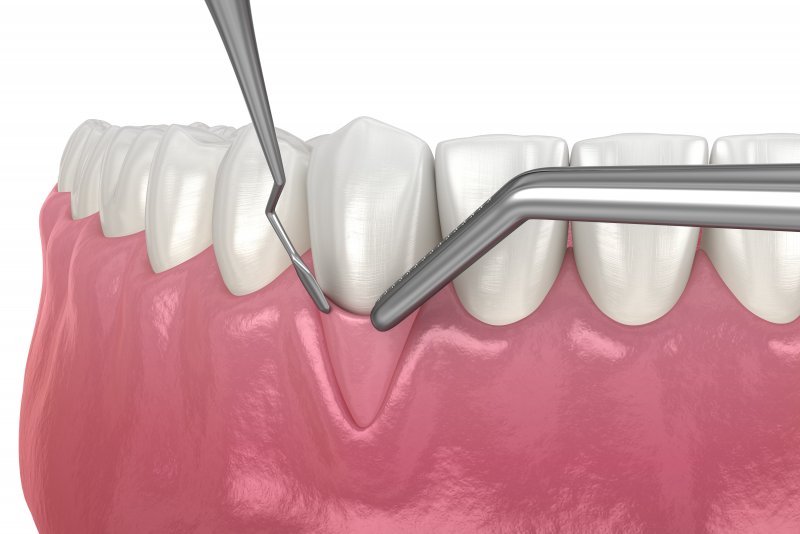
What will happen during your gum disease treatment? Obviously, the bacteria causing the infection will have to be removed, but your periodontist will also have to do something about the damage that the gum tissues have already suffered. Gum recession is a common consequence of advanced gum disease, and to treat it the lost tissue will likely need to be restored via gum grafting. If you or a loved one has gum disease in Dallas, then you should be aware of how gum grafting might be used to combat it.
Why are Gum Grafts Performed for Gum Disease?
As gum disease continues, the bacteria that have gathered around and below the gum line will gradually destroy the nearby tissues. This process happens bit by bit, so you may not be aware of it happening at first, but eventually you may notice that your tooth has become more sensitive to temperature or looks longer than normal. The further the gums recede the larger the pockets between the teeth and gum line become; this creates more space for harmful bacteria to build up and make the problem even worse. If gum recession isn’t treated in time, the tissues holding the teeth in place could become so badly damaged that the tooth is lost altogether.
The purpose of the gum graft is to repair the gums after recession has occurred. This helps resecure the tooth to the mouth, ensures the tooth roots are well-protected again, and prevents the damage from spreading further. The sooner a gum graft can be performed, the better it will be for your oral health.
How Do Gum Grafts Work?
Your periodontist in Dallas takes tissue from one area and stitches it over the areas where gum recession has occurred. Sometimes the tissue is taken from a flap of skin taken from the roof of your mouth; this is called a connective tissue graft. However, if there’s plenty of gum tissue around the area where the gum graft is needed, a pedicle graft – which simply involves partially cutting away the gum tissue and repositioning it as needed – can be performed instead.
You should fully recover from the surgery in about 2 weeks. You might need to take antibiotics and pain medication during this time, but as long as you’re taking good care of your mouth, your gums should heal without any problem. If complications do arise, you should let your periodontist know right away.
Whether or not you need gum grafting depends on how advanced your gum disease already is and what sort of damage it has caused. If you think your gums have started to pull back, your first thought should be, “I need to call a periodontist near me right away!”
About the Author
Dr. Andrew Barnett currently serves the Dallas area as a periodontist at his practice, Lincoln Park Periodontal and Dental Implant Group. He is a board-certified periodontist who is particularly skilled in performing different types of surgical services, which includes gum grafting. If you suspect that you’re suffering from gum disease or gum recession, get in touch with him through his website or by calling (214) 890-7777.
